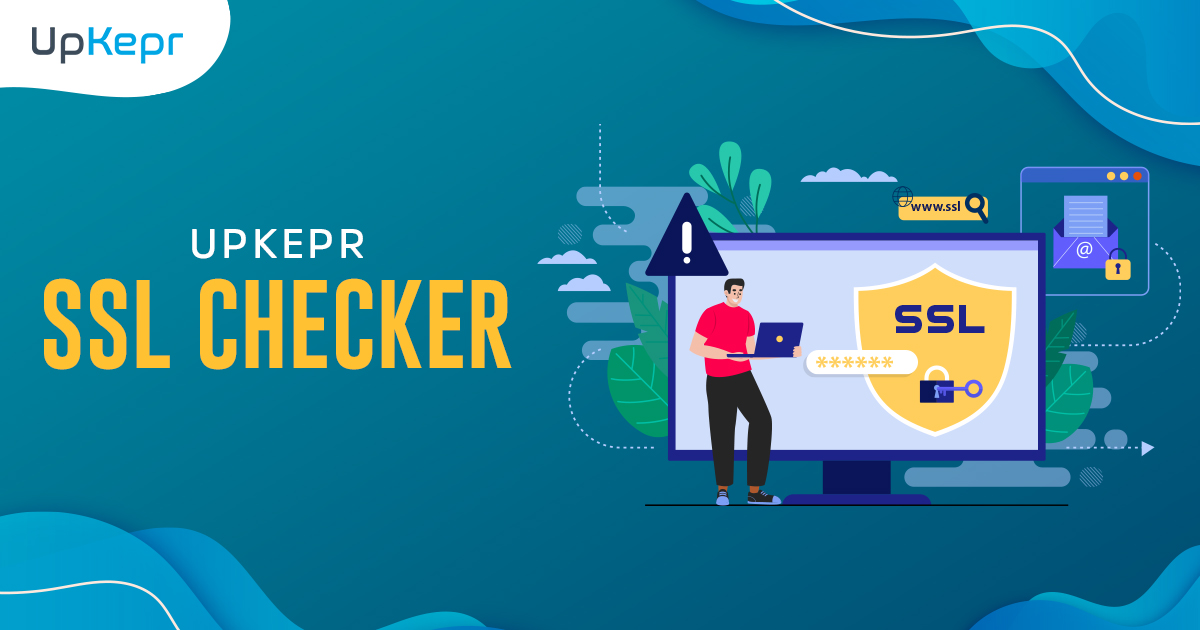
The Importance of Website Monitoring Tools for Small Businesses

Introduction
In the fast-paced digital world we live in, having a website that not only functions smoothly but also performs at its best is essential for any business to thrive. However, ensuring your website maintains optimal performance can be quite challenging, especially without the right tools in place. This is where a reliable website performance monitoring tool like Upkepr comes into play. These tools are specifically designed to track and analyze various aspects of your website's performance, helping you identify and address any issues that could potentially impact user experience and the overall success of your online presence. With Upkepr powerful monitoring capabilities, you can stay ahead of the curve and ensure that your website is always performing at its peak, giving you a competitive edge in today's digital landscape.
What are Website Monitoring Tools?
Website monitoring tools, also known as website performance monitoring tools, are software applications designed to track and analyze various metrics related to a website's performance. These metrics can include load times, page responsiveness, server response times, and more. By continuously monitoring these metrics, these tools provide businesses with valuable insights into their website's performance, helping them identify areas for improvement and optimize their website for better user experience and SEO rankings.
Website monitoring tools play a crucial role in ensuring that a website is running smoothly and efficiently. They help businesses identify and address issues that could negatively impact user experience, such as slow load times or server errors. By using these tools, businesses can proactively manage their website's performance, ensuring that it meets the needs of their users and maintains a high level of functionality.
Monitor Your Website Now
Key Benefits of Website Monitoring Tools for Small Businesses
1. Ensuring website uptime and availability: These tools monitor websites 24/7 and alert businesses immediately if downtime is detected. This ensures that businesses can address issues promptly and minimize downtime, which is crucial for maintaining customer trust and satisfaction.
2. Monitoring website speed and performance metrics: Website monitoring tools track metrics such as load times, page responsiveness, and overall website performance. By analyzing these metrics, businesses can identify and address performance issues that could impact user experience and SEO rankings. This helps businesses ensure that their websites are always running smoothly and efficiently, leading to better user engagement and higher conversion rates.
3. Detecting and mitigating security threats: Website monitoring tools can detect and alert businesses to security threats, such as malware and hacking attempts. By taking immediate action to protect their websites and data, businesses can minimize the risk of security breaches and protect their online reputation. Additionally, some website monitoring tools offer security features such as SSL certificate monitoring and vulnerability scanning, further enhancing the security of a website.
4. Optimizing website performance: By monitoring website performance metrics, these tools help businesses identify areas for improvement. By optimizing their websites for improved user experience and SEO rankings, businesses can attract more visitors and drive more conversions. This includes optimizing website content, improving website design, and ensuring that the website is compatible with different devices and browsers.
Features to Look for in Website Monitoring Tools
When selecting a website monitoring tool for your small business, it's essential to look for features that meet your specific needs. Some essential features to consider include:
1. User-friendly interface: Opt for a tool with an intuitive interface for easy monitoring and management of your website's performance. A simple, easy-to-navigate dashboard can streamline your monitoring tasks.
2. Real-time alerts: Look for a tool that offers real-time alerts via email or SMS. These alerts notify you immediately of any performance issues, allowing you to address them promptly and minimize downtime.
3. Scalability: Ensure the tool can scale with your business. As your website traffic and data grow, the monitoring tool should be able to handle increased demands without compromising performance.
4. Comparative analysis: Compare different tools based on their features, functionalities, and pricing. Look for tools that offer comprehensive monitoring capabilities and align with your budget and business goals.
5. Historical data and reporting: Choose a tool that provides historical data and performance reports. This information can help you track trends, identify potential issues, and make informed decisions to optimize your website's performance.
6. Integrations: Consider tools that offer integrations with other tools and platforms you use. This can streamline your workflow and enhance the monitoring capabilities of your website.
Choosing the Right Website Monitoring Tool
When selecting a website monitoring tool for your small business, it's crucial to consider various factors such as budget, business needs, and scalability. Upkepr stands out as an ideal choice, offering a comprehensive suite of features tailored to enhance website performance and user experience.
Upkepr user-friendly interface makes monitoring and managing your website a breeze. It provides real-time alerts via email or SMS, ensuring you're promptly notified of any issues that may arise. Additionally, Upkepr is highly scalable, meaning it can grow with your business, adapting to your evolving needs without compromising on performance.
Furthermore, Upkepr offers competitive pricing and customizable plans, making it accessible to businesses of all sizes. With Upkepr, you can rest assured that your website is in good hands, allowing you to focus on running and growing your business with peace of mind.
Implementation and Best Practices
Once you have selected a website monitoring tool like Upkepr for your small business, it's essential to implement it effectively. Some steps to follow include:
1. Customize settings: Set up the tool to match your monitoring requirements, including configuring alerts and notifications based on your preferences and needs.
2. Regular monitoring: Consistently monitor your website's performance using the tool. This helps you stay updated on any issues that arise and enables you to address them promptly.
3. Data analysis: Regularly review the monitoring data provided by the tool. This analysis helps you identify trends, pinpoint areas for improvement, and make informed decisions to enhance your website's performance.
4. Optimization: Use the insights gained from monitoring and analysis to optimize your website. This may involve making changes to improve speed, enhance user experience, and boost SEO rankings.
Conclusion
In conclusion, website monitoring tools like Upkepr play a crucial role in helping small businesses optimize their website's performance and user experience. By continuously monitoring key performance metrics and providing valuable insights, these tools help businesses identify and address issues that could impact their website's performance and overall success. By choosing the right monitoring tool and implementing it effectively, small businesses can enhance their website's performance, improve user experience, and drive business growth.



























































































 Sign Up with Google – Free
Sign Up with Google – Free Sign Up with Github – Free
Sign Up with Github – Free